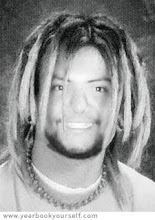Only You Know the Best Wake Board for You
Sports equipment functions as the sportsman’s most important asset. Baseballs are easier to catch with the perfect glove. Tennis balls are easier to strike with the right racket. Zorbing (rolling down a hill in an enormous inflatable ball) cannot be fully enjoyed without the right zorb. While a bad workman blames his tools, a good sportsman’s complaints about his sports equipment can sometimes be justified. Thus, when selecting a wake board, select the best one for you!
When shopping for a wake board, the one that you ultimately choose will probably show the type of wakeboarding you wish to do, as well as your level of expertise. Various board features can impact how they will function. Thus, you should consider several factors, in order to choose the board that is ideal for you.
You Are Chairman Of The Board
Two types of the wake board include the single tipped and twin tipped. The former are squared at one end, and sharp at the other end. On the other hand, the twin tipped wake board is curved on both ends. This makes it easier to complete tricks and change direction.
You should consider the level of your skill and style of wake board riding. Experienced boarders tend to prefer boards with rounded edges, which accommodate faster speeds and make air trackers easier to perform. On the other hand, novices tend to choose boards with square edges, providing more steadiness and stability and control.
Board Length Matters
The length of a wake board can vary from one hundred twenty to one hundred fifty centimetres. Meanwhile, the width typically ranges from thirty eight to forty four centimetres. Longer boards are more ideal for beginners, as they provide easier turning and starting. Also, without knowing who else will be using your board, it is wise to select longer boards, as they can accommodate both large and small people.
The length of a wake board can vary from one hundred twenty to one hundred fifty centimetres. Meanwhile, the width typically ranges from thirty eight to forty four centimetres. Longer boards are more ideal for beginners, as they provide easier turning and starting. Also, without knowing who else will be using your board, it is wise to select longer boards, as they can accommodate both large and small people.
Rock And Roll With Rockers
In addition to the size of the wake board you buy, consider the curves or angles located at the extremities of the board. This is referred to as the rocker of the board. A lower rocker contains a horizontal bottom, permitting the rider better control and acceleration of the board. Meanwhile, a higher rocker contains a more curved bottom, accommodating simpler landings after jumps. Meanwhile, continuous rocker involves a gradational rocker curve. Fourthly, progressive rockers include a slow curve along the center, and consequently become more slanting beneath the feet.
In addition to the size of the wake board you buy, consider the curves or angles located at the extremities of the board. This is referred to as the rocker of the board. A lower rocker contains a horizontal bottom, permitting the rider better control and acceleration of the board. Meanwhile, a higher rocker contains a more curved bottom, accommodating simpler landings after jumps. Meanwhile, continuous rocker involves a gradational rocker curve. Fourthly, progressive rockers include a slow curve along the center, and consequently become more slanting beneath the feet.
Fishless Fins
Lastly, situated underneath the wake board, fins serve as tools for guiding the board. In turbulent water situations, broader fins are ideal for steering boards as they leap off the water. On the other hand, thinner fins are more ideal for smooth water situations.
The wake board functions the toolbox of the wakeboarder. Thus, a board that best caters to your expertise level and style—is the best one for you!
Lastly, situated underneath the wake board, fins serve as tools for guiding the board. In turbulent water situations, broader fins are ideal for steering boards as they leap off the water. On the other hand, thinner fins are more ideal for smooth water situations.
The wake board functions the toolbox of the wakeboarder. Thus, a board that best caters to your expertise level and style—is the best one for you!


No hay comentarios:
Publicar un comentario